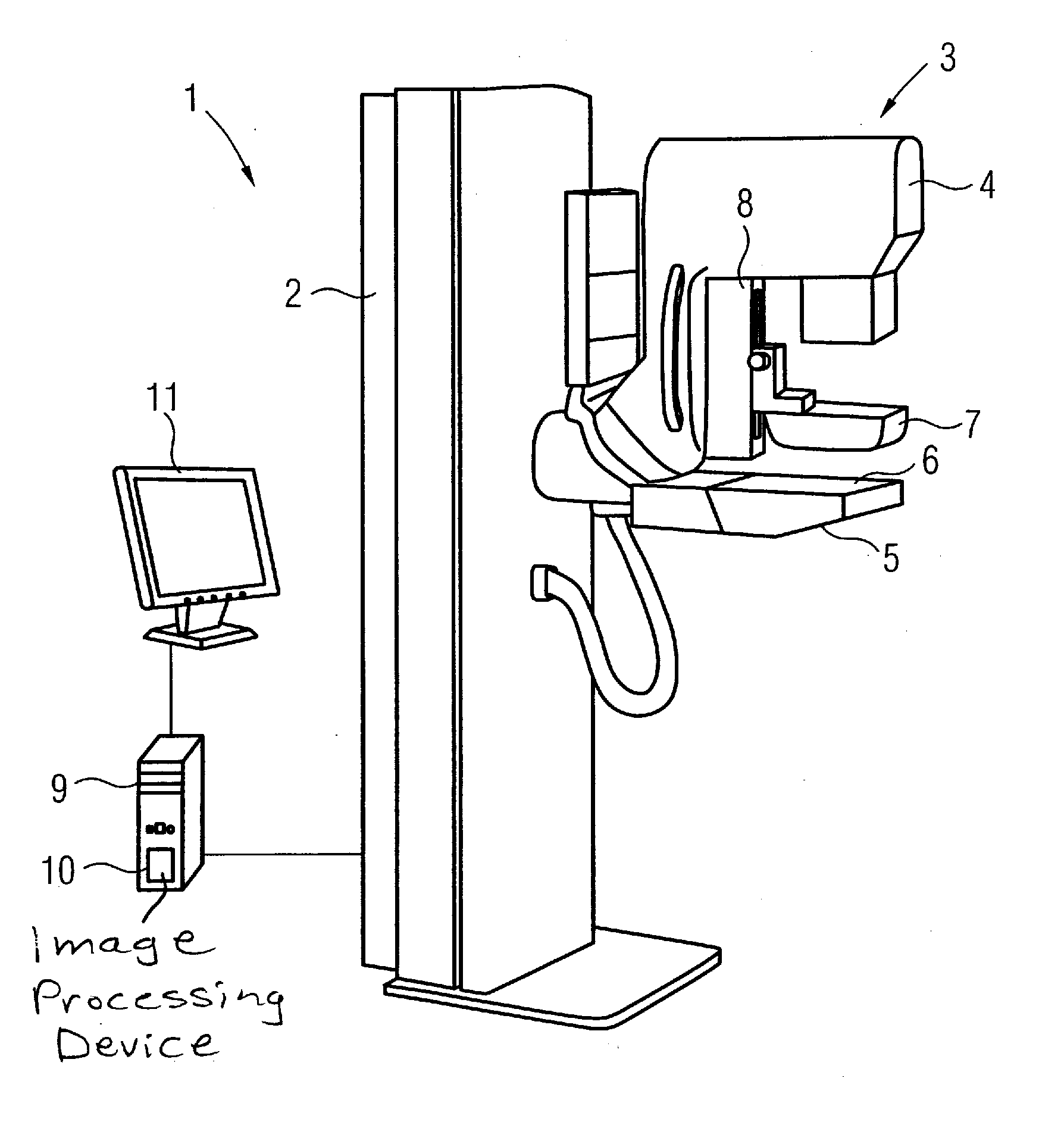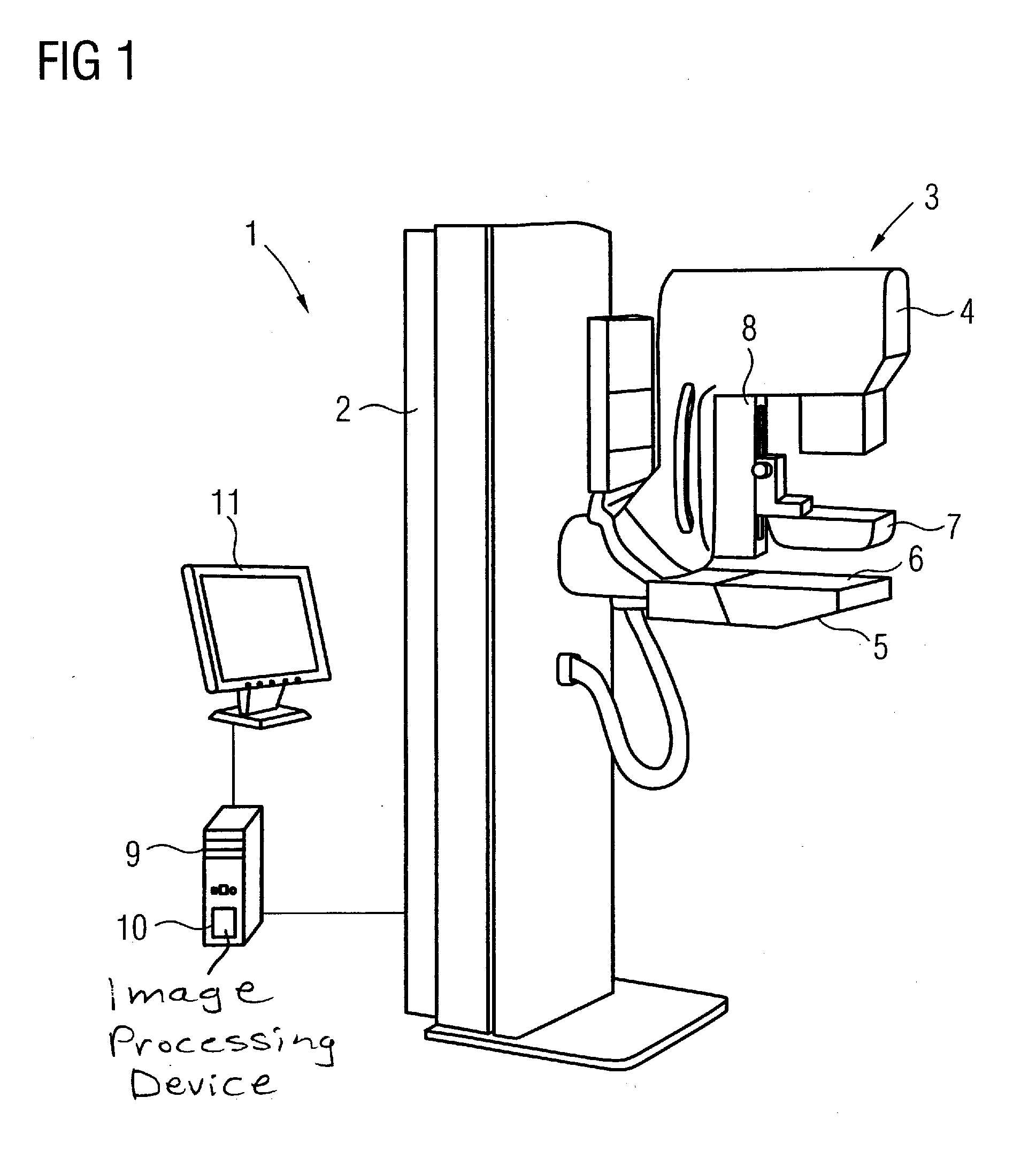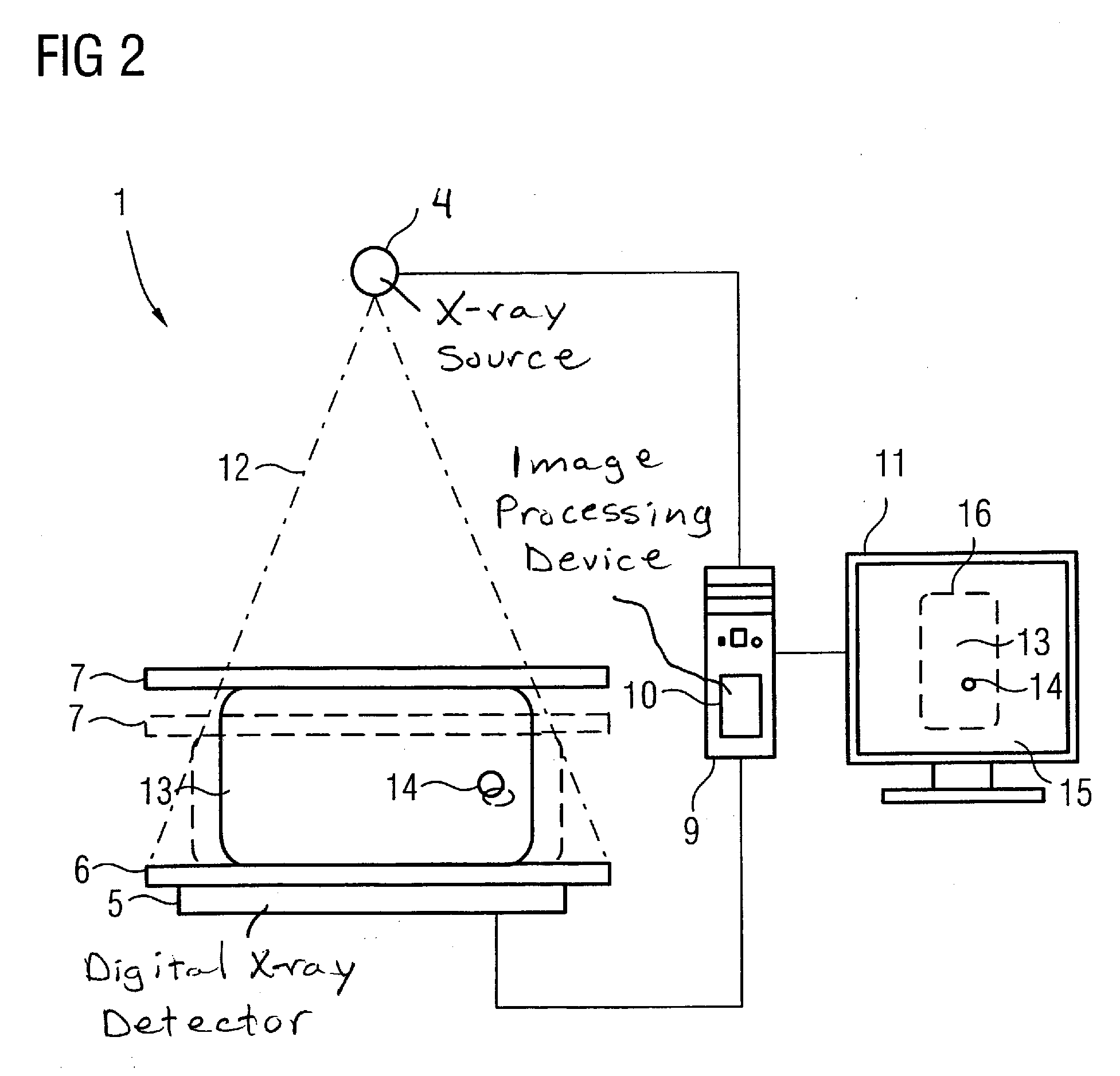Mammography method and apparatus with image data obtained at different degrees of breast compression
a breast compression and image data technology, applied in mammography, medical science, diagnostics, etc., can solve the problems of significant cost, method disadvantage, patient stress, etc., and achieve the effect of higher degree of specificity
- Summary
- Abstract
- Description
- Claims
- Application Information
AI Technical Summary
Benefits of technology
Problems solved by technology
Method used
Image
Examples
Embodiment Construction
[0018]FIG. 1 shows a known mammography apparatus 1 having a vertical column 2 on which the image acquisition unit 3 is arranged vertically such that it can move. The image acquisition unit 3 has an x-ray source 4 as well as a digital x-ray detector 5 that is arranged below a support plate 6 for the female breast. A compression plate 7 is provided above the support plate 6. The compression plate 7 is likewise vertically driven in an adjustable manner on a vertical support 8. With this compression plate 7 the breast can be compressed in a known manner for image acquisition. A control device 9 is also provided that controls the entire operation of the x-ray apparatus as well as the image acquisition and image evaluation operation, for which a suitable image processing device 10 is provided. Acquired images are output on a monitor 11.
[0019]FIG. 2 shows the mammography apparatus 1 of FIG. 1 in a schematic representation in order to explain the method according to the invention in more de...
PUM
 Login to View More
Login to View More Abstract
Description
Claims
Application Information
 Login to View More
Login to View More - R&D
- Intellectual Property
- Life Sciences
- Materials
- Tech Scout
- Unparalleled Data Quality
- Higher Quality Content
- 60% Fewer Hallucinations
Browse by: Latest US Patents, China's latest patents, Technical Efficacy Thesaurus, Application Domain, Technology Topic, Popular Technical Reports.
© 2025 PatSnap. All rights reserved.Legal|Privacy policy|Modern Slavery Act Transparency Statement|Sitemap|About US| Contact US: help@patsnap.com



